Introduction
Chirashizushi, often referred to as “scattered sushi,” is a vibrant and colorful Japanese dish where sushi rice is topped with an array of ingredients, typically including a mix of vegetables, seafood, and garnishes. Unlike the more familiar rolled sushi, chirashizushi is served in a bowl, showcasing its ingredients in a festive display that is both pleasing to the eye and the palate. My personal connection to this dish is rooted in childhood celebrations; it was often prepared by my grandmother during Hinamatsuri (Girl’s Day) as a special treat, symbolizing happiness and prosperity
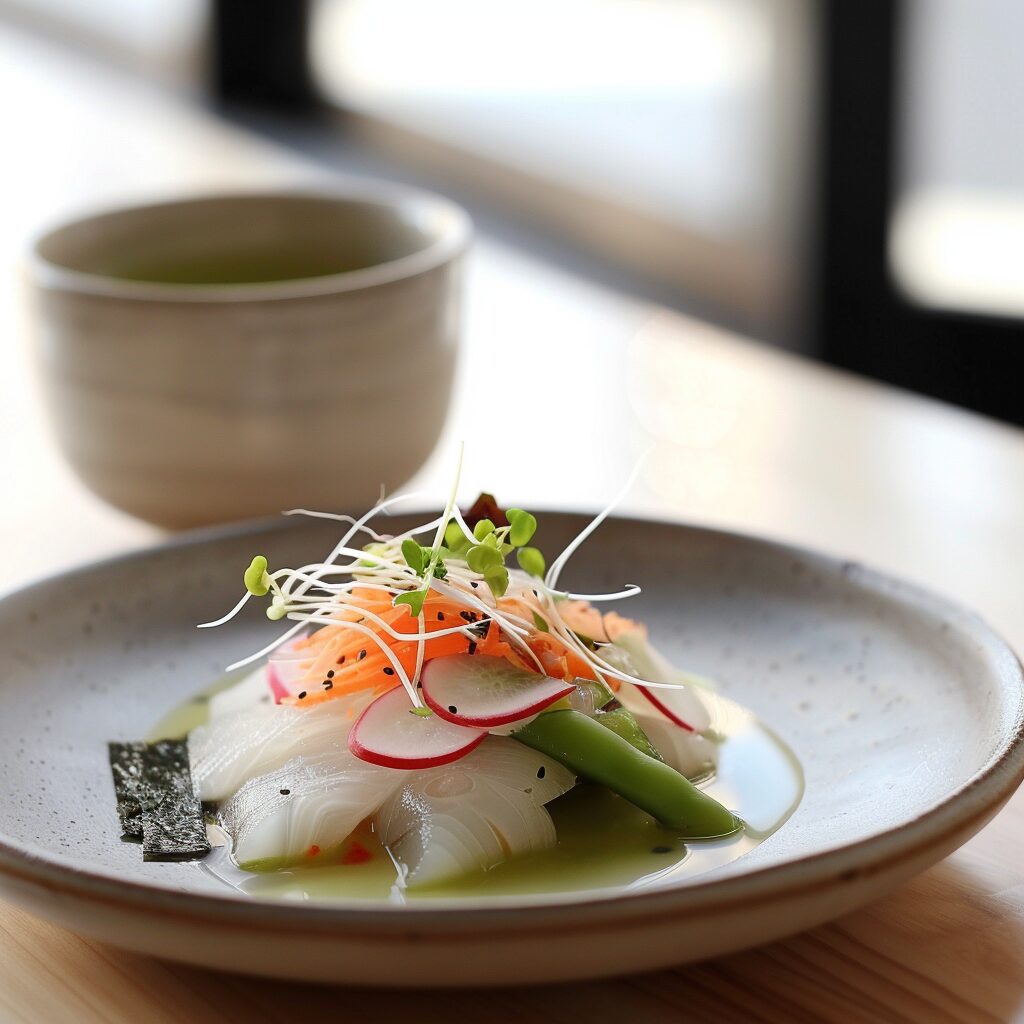

Cultural Context
In Japan, chirashizushi is not just a dish; it’s a celebration of seasonality and regional produce. It is especially popular during festivities like Hinamatsuri and New Year’s celebrations, where its colorful appearance adds to the festive atmosphere. The dish is thought to have originated during the Edo period, serving as a way to enjoy sushi in a more casual and communal setting, contrasting the more formal nigiri and rolled sushi
Ingredient Spotlight
Brown Rice: Used here instead of the traditional white sushi rice, adding a nuttier flavor and firmer texture.
Konbu: A type of seaweed that infuses the rice with umami flavors.
Vegetables: Carrots, renkon (lotus root), and shiitake mushrooms, each bringing unique textures and flavors.
Aburaage (Fried Tofu Skins): Offers a sweet and spongy contrast, soaking up the flavorful seasonings.
Seasoning Mix: A blend of rice vinegar, sugar, and salt that subtly dresses the sushi rice, giving it its characteristic tangy taste.
Health Benefits
Chirashizushi is a balanced meal with a variety of nutrients. Brown rice provides dietary fiber and essential minerals. Vegetables add vitamins and antioxidants, supporting overall health. The dish is customizable to include protein-rich toppings like tofu or seafood, making it adaptable to different dietary needs while remaining relatively low in calories
Cooking Tips
Rice Preparation: Wash the rice thoroughly and cook it with a piece of konbu to enhance its flavor. Ensure the rice is cooled to room temperature before adding the vinegar mix to maintain the right texture.
Vegetable Cooking: Simmer the vegetables just enough to absorb the flavors without becoming too soft, preserving their natural texture.
Seasoning: Adjust the vinegar mixture according to your taste; balance is key in achieving the perfect chirashizushi.
Serving Suggestions
Serve chirashizushi in individual bowls, layering the sushi rice first, then adding the cooked vegetables and optional garnishes like sliced sugar snap peas, pickled ginger, wasabi, and radish sprout. For a decorative touch, sprinkle toasted sesame seeds and strips of nori over the top. Pair with a side of miso soup and a glass of cold sake or green
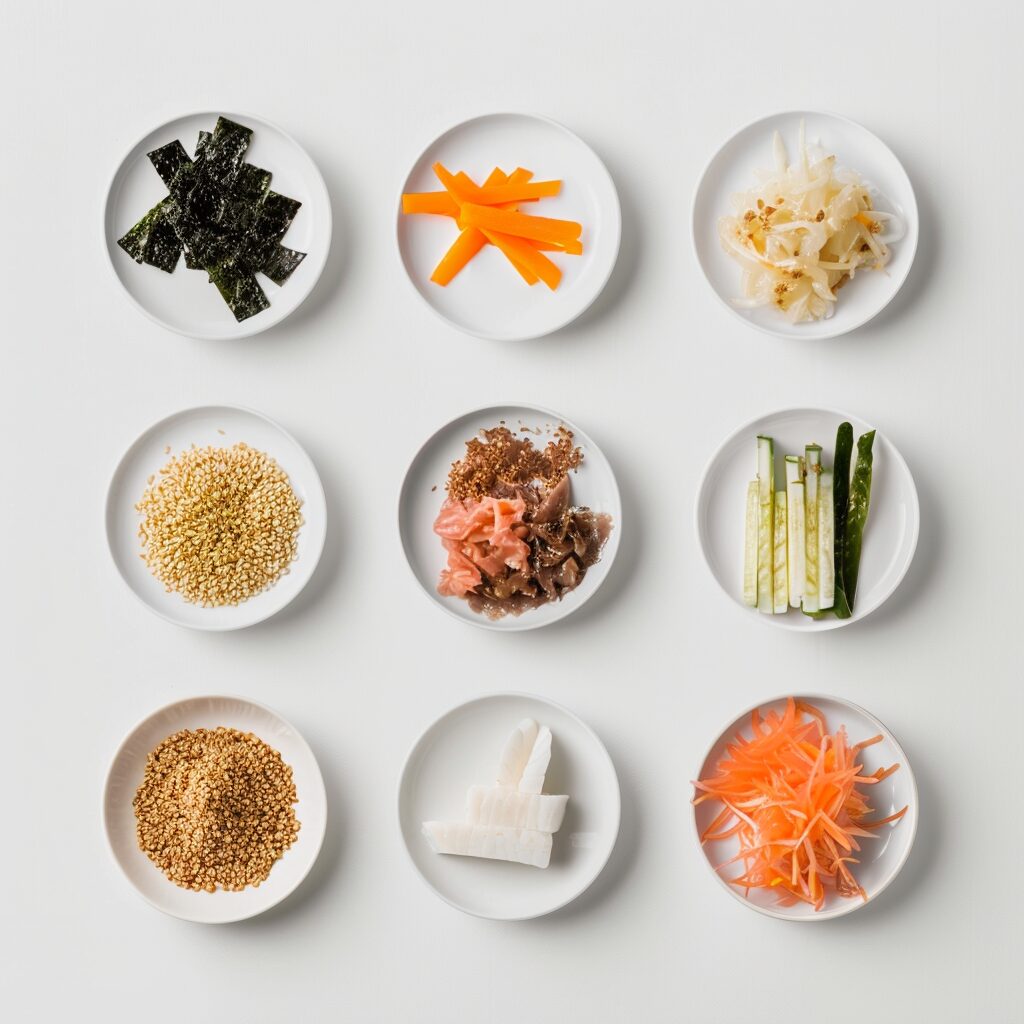

Chirashizushi Variations
Seafood Addition: Include slices of fresh sashimi or shrimp for a traditional touch.
Vegan Options: Enhance with avocado slices or cucumber for freshness without any animal products.
Conclusion
Chirashizushi is a dish that invites creativity and celebrates the diversity of Japanese cuisine. It’s perfect for special occasions or as a delightful weekend meal. I encourage you to try making chirashizushi at home and share your experiences or any personal touches you add. Looking forward to your comments and suggestions for future dishes!
PrintChirashizushi Recipe
The Celebratory Dish of Scattered Sushi. Chirashizushi, often referred to as “scattered sushi,” is a vibrant and colorful Japanese dish where sushi rice is topped with an array of ingredients, typically including a mix of vegetables, seafood, and garnishes.
- Cuisine: Japanese
Ingredients
For Sushi Rice (Shari):
- 2 cups brown rice
- Small piece of konbu (~2×2 inches)
Seasoning for the Rice:
- 3 Tbsp rice vinegar
- 2 Tbsp sugar
- 1 tsp salt
- 2 Tbsp white sesame seeds, toasted
For the Vegetables:
- 1 cup dashi (konbu shiitake or katsuo konbu dashi)
- 1 Tbsp light soy sauce (usukuchi shouyu)
- 1 Tbsp mirin
- 1/2 Tbsp sugar
- 2–3 large pieces aburaage, thinly sliced
- 1 cup carrots, julienned
- 1 cup renkon, quartered and thinly sliced
- 8 fresh shiitake mushrooms or dashigara
For serving:
Using a bowl, layer 1 to 1 ½ cups brown sushi rice. Scatter the vegetables on top, followed by the desired toppings and enjoy!
Instructions
For the sushi rice (shari):
- For the sushi rice, first cook in rice maker as you normally would, but with a piece of konbu (which helps improve the flavor).
- Meanwhile, mix the rice vinegar, salt and sugar and set aside.
- Once the rice is done, gently folder in the rice vinegar, sugar, salt mixture.
- Allow to cool to room temperature.
For the vegetables:
- Using a small sauce pan add the dashi, light soy sauce, mirin and sugar and bring to a simmer.
- Add carrots, shiitake, and renkon and cook for about 15 minutes until liquid has reduced.


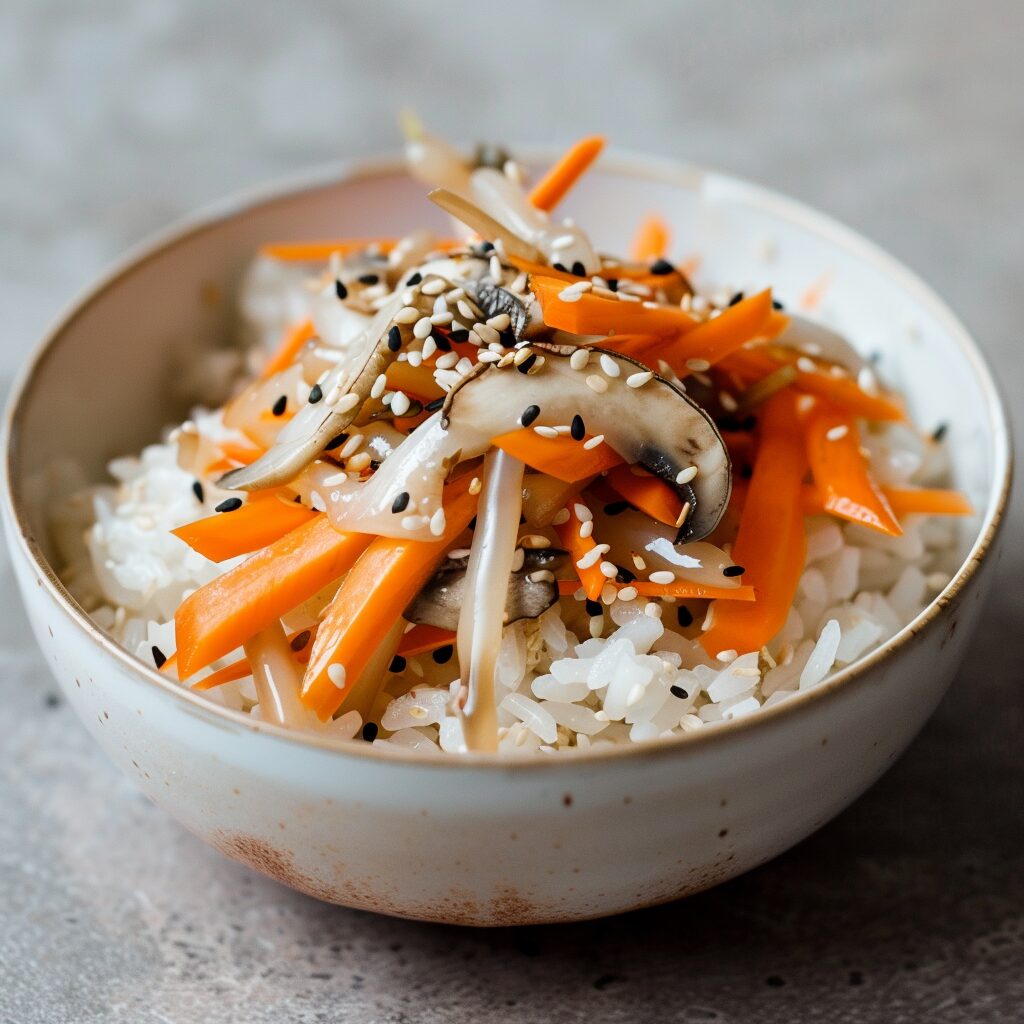




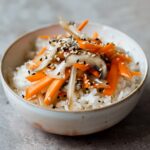
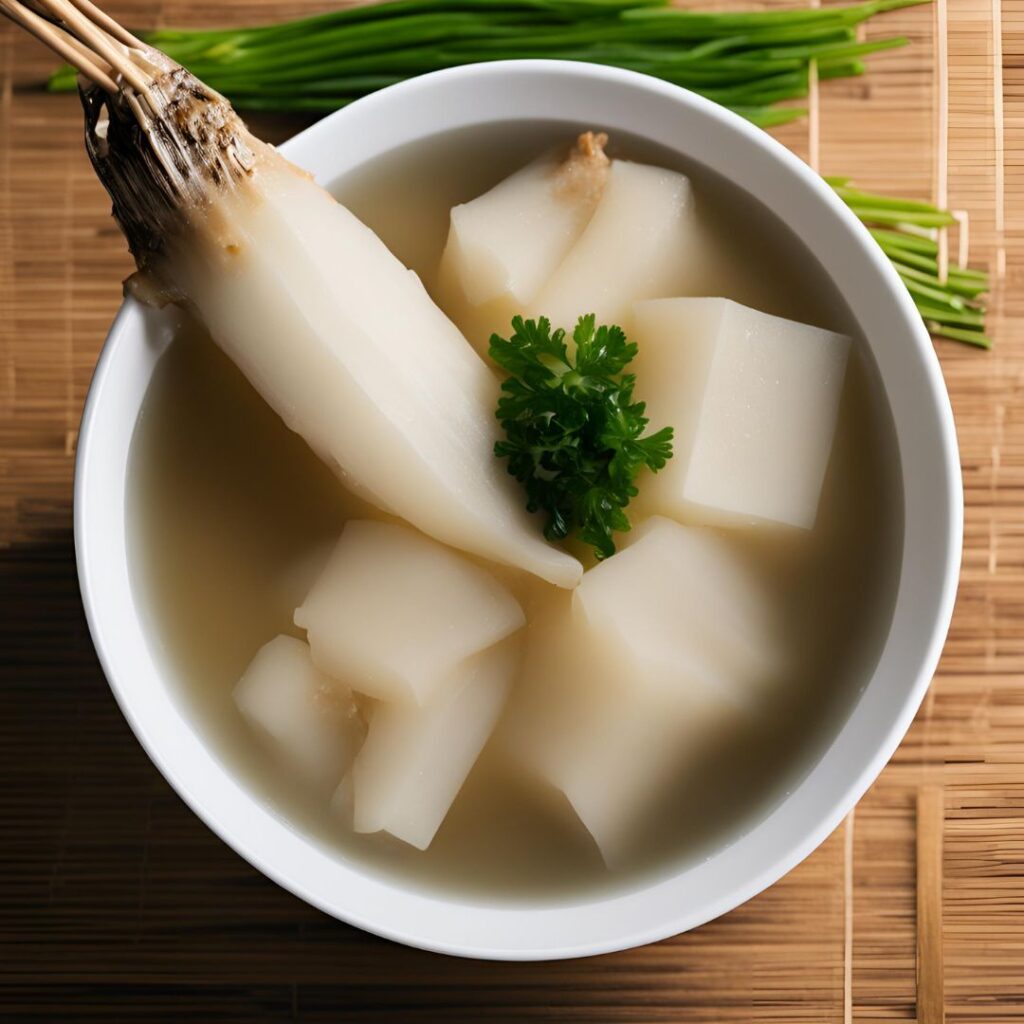

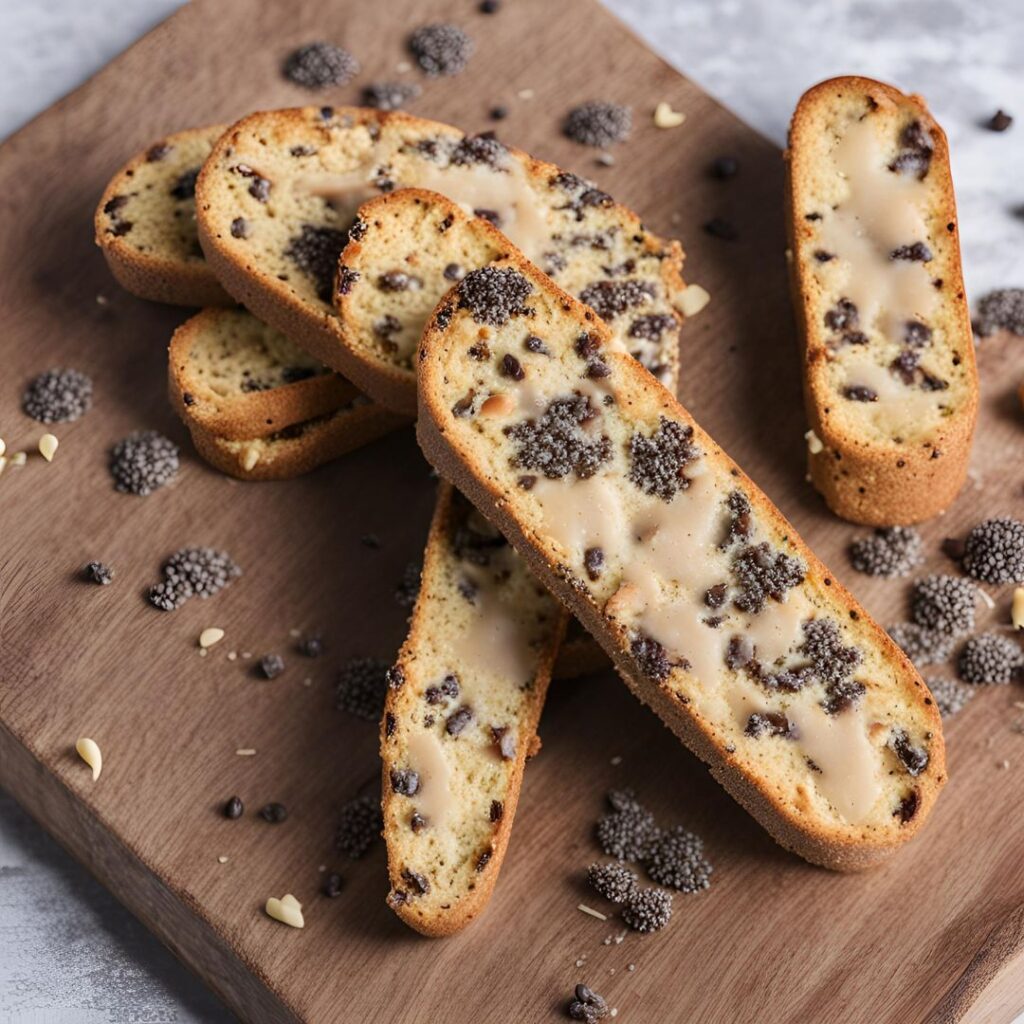
Konnichiwa! (Hello!) I'm Pat Tokuyama, a Japanese tofu cookbook author, who travels for music, food, and adventure. If you like Japanese tea, checkout some of the newestorganic japanese tea, matcha bowls and noren and more!
** Curious about the Plant Based Japanese Cooking Club? ** Learn more here!